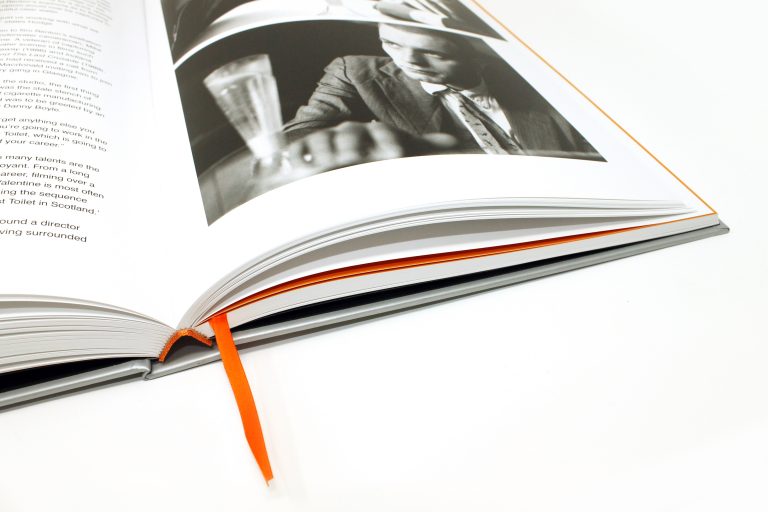Resources
Binding Options
Choosing the right binding for your print project
When it comes to printed materials, the binding you choose is more than just a finishing touch. Binding determines how your project looks, feels, and holds up over time. From simple brochures to premium publications, understanding the main types of binding can help you achieve the right balance of appearance, durability, and cost.
Here’s a straightforward guide to choosing the right binding for your print project, including the most common binding methods and what they’re best suited for.
BEST FOR SMALLER DOCUMENTS
Saddle Stitching
Saddle stitching is one of the most popular methods for booklets, brochures, and small magazines. Sheets are folded and stapled along the spine, creating a neat and lightweight product.
It’s an efficient choice for projects up to around 64 pages, offering a fast turnaround and low production cost. Saddle stitching is ideal for mailouts, handouts, or short-term use materials that need to be easy to distribute.


BEST for larger documents
Perfect Binding
Perfect binding is commonly used for thicker books, annual reports, and high-quality magazines. The pages and cover are glued together at the spine, creating a square edge that looks clean and polished.
It’s ideal if you want a publication that feels substantial and professional, with the added benefit of displaying a spine title on a shelf for easy identification and a more refined appearance.
BEST FOR HEAVY USE
PUR Binding
PUR binding is similar to perfect binding but uses a stronger adhesive (Polyurethane Reactive). This makes it a smart choice for publications that will be handled frequently, like product catalogues or manuals.
The flexible, durable spine means pages stay secure, even with heavy use, and the superior glue strength also allows for better performance with coated or heavy-weight papers. Additionally, PUR-bound books can open flatter than traditional perfect-bound ones, improving readability and user experience.


PRACTICAL AND EASY TO USE
Wire or Spiral Binding
Wire and spiral binding allow pages to open flat or fold back on themselves, making them practical for notebooks, training manuals, and reference guides. Wire binding uses metal loops available in various sizes and colours such as black, white, and silver, while spiral binding typically uses coloured plastic coils.
This style is especially useful when usability is a priority. For example, in workbooks or cookbooks that need to stay open on a surface, or hanging wall calendars.
HARDBACK QUALITY & LONGEVITY
Case Binding
For a premium finish and long lifespan, case binding is the traditional choice. Pages are gathered in sections, sewn together, and attached to a hard cover. There are many ways to customise your hardback book including printed dustjackets and endpapers, head and tail bands and ribbon markers.
Case binding is used for hardcover books, corporate publications, and any project where durability and presentation matter.

Happy to help
There’s no one-size-fits-all solution when it comes to binding. The right binding method depends on the size of your document, how it will be used, your budget, and the impression you want to make.
If you’re unsure which option will work best for your project, it’s worth speaking to your print partner early on. A thoughtful choice now can make all the difference to the quality and usability of the finished piece. If you’re unsure about which finishes are right for your next project, we’re always happy to talk through options and make recommendations to suit your project, timeline and budget.
Other resources
Our A–Z glossary of printing terms to better understand key industry jargon and processes.
Discover standard paper sizes at a glance to choose the right format for your print project.
Calculate your book spine width in seconds using our handy online Spine Width Calculator.
Download our quick guide to preparing print-ready files using Adobe InDesign.
Our cutter guide book includes over 100 capacity and non-capacity folder guides.
A practical guide to some of the most effective special finishing options.
Explore optional extras and finishes for your hardback book printing project.







